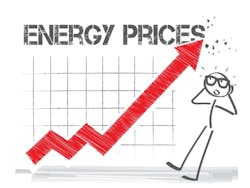Not so long ago, US microgrids were closely associated with severe storms. After all, they seemed to be the most likely events (with some exceptions) to knock out grid power to large swaths of the population for an extended period.
In fact, in our 2019 History of microgrids in the US: From Pearl Street to plug-and-play, we traced the contemporary microgrid boom to a series of severe storms in 2011-2012, the most notorious being SuperStorm Sandy.
After that, a long list of hurricanes, among them Maria, Hanna, Irma, Harvey and Ida continued to make the case for microgrids. Last year, Texas’ Winter Storm Uri reminded us it doesn’t take hurricane winds to disable the grid — extreme cold can also take its toll.
No doubt more storms will underscore the need for microgrids. But we’re increasingly seeing microgrids tackling additional problems that speak to the versatility and nimbleness of the technology.
Microgrids have always had these abilities, but they seem to be taking on new importance in light of climate concerns, geopolitical disruption and the state of the US grid.
1. Sustainability and security
More than 1,000 companies, including multinational firms, have set emissions reduction targets to meet their environmental, social and corporate governance goals. A recent study published by Nature found that those using renewable energy certificates (RECs) to meet their goals may find themselves coming up short. RECs aren’t prompting as much development of renewable energy as expected. So when companies say that Scope 2 emissions — indirect greenhouse gas emissions that result from the purchase of electricity, steam, heat or cooling — can be cut with RECs, it’s misleading, according to the study. The RECs aren’t associated with real emission reductions.
This may be part of the reason that we’re seeing more microgrid development associated with the pursuit of sustainability goals. With the renewables built on-site, representing concrete — and not purely contractual — renewable energy, a company knows exactly how much emissions its system can offset.
Two companies using microgrids in pursuit of sustainability goals — Bimbo Bakeries USA and Albertsons — are described in this video, Sustainable Commerce in the Age of the Microgrid, from Microgrid 2022.
Interestingly, Albertsons is also pursuing energy security. Because Albertsons operates food distribution centers in California, its operations are considered critical to the safety of the population. As a result, its distribution centers fall under the Homeland Security Presidential Directive No. 9 that establishes a regional policy to defend food and agriculture systems against terrorist attacks, major disasters and other emergencies. “So resiliency is a key item for Albertsons. They actually have a homeland security office check up on them on a periodic basis to make sure the sites are secure,” said Jon Erickson, senior project manager at Power Engineers.
2. Managing energy prices
Americans are paying attention to energy prices again and for good reason. The war in Ukraine has sent natural gas prices soaring to levels not seen in almost a decade. Natural gas fuels 38% of the utility-scale power produced in the US. So the high prices will inevitably reverberate through to homes and businesses using electricity.
In addition, wholesale markets are seeing a lot of price volatility, particularly in places like Texas, where this week the Electric Reliability Council of Texas (ERCOT), the grid operator, called for Texans to conserve electricity as reserve margins tightened. Because of severe heat, Texas has experienced record-breaking demand for electricity, surpassing ERCOT’s projections for the summer.
Those with microgrids have the ability to offset high electricity prices. They may, for example, stop taking power from the grid during high priced periods and instead rely on their on-site generation. They also may sell energy and services to the grid when it’s under strain as a way to generate revenue or participate in demand response programs.
“We’re active participants in wholesale markets and the volatility of wholesale markets is increasing. That creates opportunity so the revenue streams are actually going up [for] those grid services that we sell as an adjunct to creating resiliency for our local customers,” said Allan Schurr, chief commercial officer for Texas-based microgrid developer Enchanted Rock, while speaking at Microgrid 2022 during a session titled Megatrends and Microgrids: Macroeconomic Influences on the Microgrid Market.
3. Acting as a reliable alternative to a grid that may not be up to the task
Power outages have been in the news this summer from California to the Midwest to Texas. Utilities in California have been shutting off power to customers in an attempt to avoid sparking wildfires with transmission lines.
Texas faced record heat this week that made power outages in Houston and Dallas painful for residents.
This spring Midcontinent Independent System Operator raised eyebrows when it projected that it will not have sufficient power this summer to meet peak demand.
A review by Reuters found that power outages have doubled on the US grid over the last six years and that needed repairs will cost $2 trillion.
This comes as businesses are preparing to electrify their fleets, leaving some wondering if the electricity will be available when they need to charge their vehicles. Electrification is another reason, in addition to sustainability, that Albertsons is attracted to microgrids, as noted in the conference video.
“It’s almost daily, certainly weekly, that we have some kind of unexpected event that is causing long term outages,” Schurr said. That’s what society can just no longer accept. The gap is increasing between what the grid can provide and what customers’ expectations are.”
Track news about US microgrids. Subscribe to the free Microgrid Knowledge Newsletter.
About the Author
Elisa Wood
Editor-in-Chief
Elisa Wood is the editor and founder of EnergyChangemakers.com. She is co-founder and former editor of Microgrid Knowledge.
